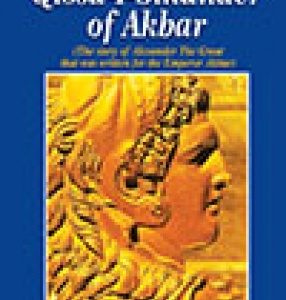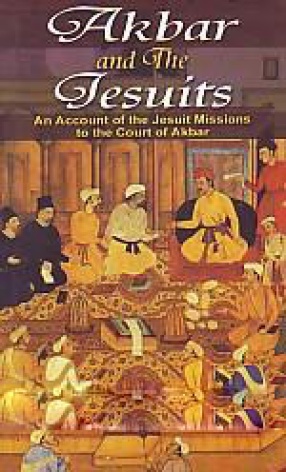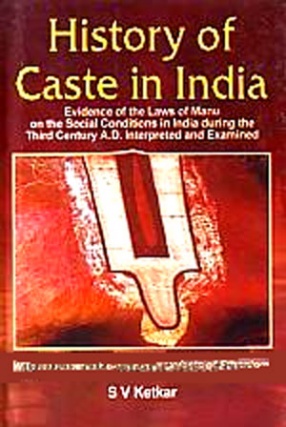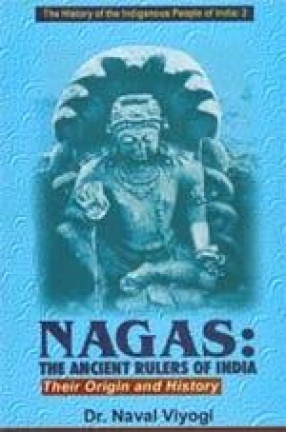
Low Price Publications

69 books












Alexander, the Great stomped across the ancient world and his indelible footprint was so transformative in the short span of his life that its effect lasted for the next 1,500 years. All great generals and conquerors that appeared after him have been compared against the standards set by him. The great Mughal emperor, Akbar was in his own right a great ruler. Unlettered, but erudite he had a vast collection of books, and lurking in there, one might imagine, was a ...

This is an indepth study of the subject of the army of the Mughal rulers in all its aspects such as recruitments,rewards and distinctions,equipment discipline,strategies etc.The book covers rather an obscure corner of indian History viz, the reigns of Aurangzeb`s (Alamgir) successors (1707-18Q3).

The present volume contains some of the papers presented in the First International Conference on `Buddhism and National Cultures` sponsored by Indian Council for Cultural Relations, Indian Council of Historical Research, Indian National Advisory Committee on Buddhist Studies and Indian Council of Philosophical Research in collaboration with Indian Council of Social Science Research, Sahitya Academy, Sangeet Natak Academy, Lalit Kala Academy and University Grants ...










The book starts with a brief account of Delhi at the advent of the 20th century. It was written to serve as a guide-book to the visitors to Delhi. The rest of the six chapters distinctly highlight: the modern city of Shahjehanabad; the scenes in Delhi in 1857; the south side of Delhi including Humayun`s tomb, the grave of Nizam-ud-din Awliya and the Safdarjang tomb; Ancient Delhi of the Hindu and Mohammadan era including the Kila Rai Pithora, the Kutab Minar and ...


This book by a renowned Pali scholar is of great academic worth as it expounds the seminal ideas, key concepts and basic theories of Buddhist thought pertaining to dhamma and abhidhamma.

The set is one of the pioneering works in the field of Ethnology Anthropology. It is probably the best and only comprehensive record o almost all the tribes and castes of the southern Indian region covering the areas of Andhra Pradesh Karnataka, Kerala, Tamil Nadu etc. It describes the people and their lifestyle their social life, customs manners and religion ceremonies, depicted by many of the rare photographic records.

In the first part, the present collection, notwithstanding its short-comings, will be received with indulgence by those interested with the revival of Hindu music. It also provides a further collection of the views of foreign writers on Hindu music which has been placed in the second part. The first part contains extracts from almost all the eminent works on Hindu music found in the Englis language.The similarity of the music of Egypt and Greece to that of this ...


Before India's sad partition in 1947, Punjab was a vast province, covering almost the whole north western tract of the country. It comprised, besides the present day Pakistani province of Punjab, the three existing states of India, viz. the Haryana, the Punjab and the Himachal Pradesh. The present publication, on the 'Undivided Punjab', assembles (in alphabetical order) the entire array of the district and states gazetteers of the erstwhile province, ...

Manu authors have 'tried their hand' on vast complex and enigmatic India. It is an enormous subject defying the efforts of most to describe and /or explain it's tremendous diversity, lovingly and effectively, as the country and its colourful talented, but so modest people deserve. Better to tell it 'as it is' and allow one's readers to make their own judgements. Disdaining all prejudice and idiosyncratic and sensational factors which have dominated nearly all ...




The Nagas, like most of the other native tribes had serpent as their totem. They also used to worship serpent and consider them to be their protective deity. They also used to wear artificial hoods of cobra on their heads at certain occasions. The tradition of Naga worship or totem was in prevalence in Babylonia, Assyria, Palestine and Iran from ancient times and it was brought to India alongwith migration of Sumerians and Assyrians and Dravidian race. There are ...
